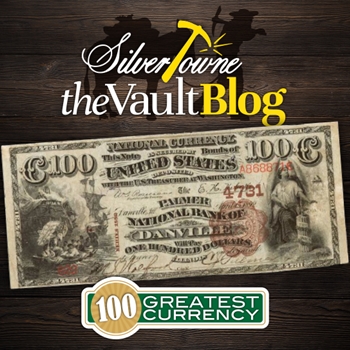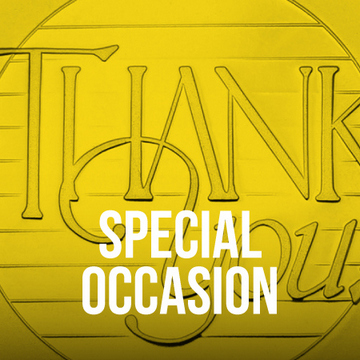
Up next in our series covering Whitman Publishing's 100 Greatest American Currency Notes, we talk about another Brown Back note that has cemented itself in the top 30 of the compilation. With help from authors Q. David Bowers and David M. Sundman, we will learn about the highest denomination of a series in addition to a rarity among an issuer.
#26 – Highest Denomination, Series of 1882 $100 Brown Back National Bank Note
The Series of 1882 Brown Back notes are a special set of currency. The vibrant colors of red and blue green amid the rust brown color really makes the design pop. Denominations from $5 all the way up to $100 notes were issued. Back in 2006, there was one $100 note known to exist from the entire state of Vermont. Back when the notes would have been issued, there were seven different Vermont banks issuing the design.
The face of the 1882 $100 Brown Back Note features the vignette of Commodore Perry’s Victory and Union on either side of the note. The note displayed in the publication features that rare note from Vermont as mentioned above. From the National Bank of Barre (Vermont), charter 2109, the note itself has quite a backstory that Bowers and Sundman reference. The institution paid out over $1.2 million in currency, including 1,510 of the $100 Brown Back notes, before they liquidated them on April 5, 1913.
The notes also gained national attention back in the summer of 1875 as four thieves took cashier Charles A. King from his home on the night of July 6th. His wife and daughter were bound and gagged before they forced him to go to the bank and open the vault. However, the lock could not be opened until 9am the next morning. They grabbed instead 26 loose sheets of unsigned $10-$10-$10-$20 Original notes plus additional cash and left. One of the men boarded a train and jumped from it as the sheriff was searching through the cars for him. He hid in brush near the tracks until he was finally caught. The others were captured in New York City.
Historic market value in 1960 placed these notes in Very Fine condition at $350. By the time of this publication (2006), the notes soared to $13,500.







